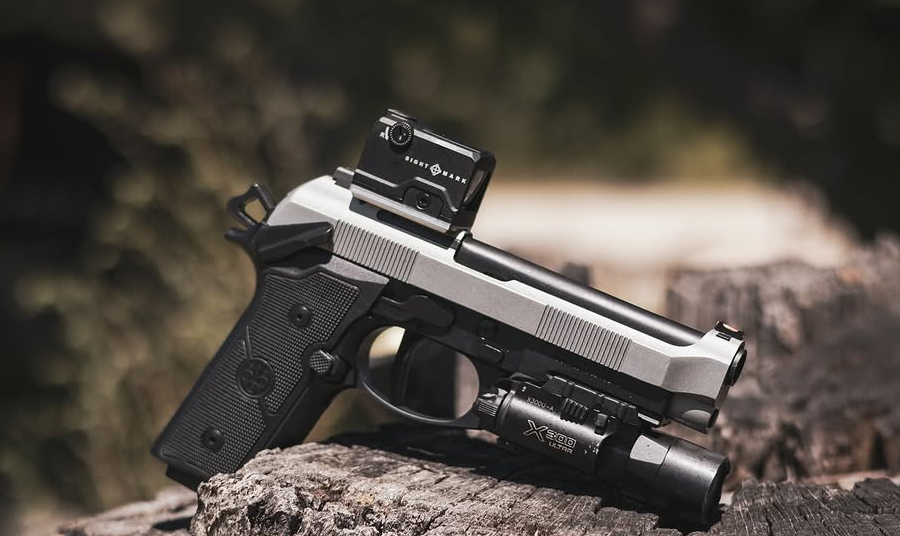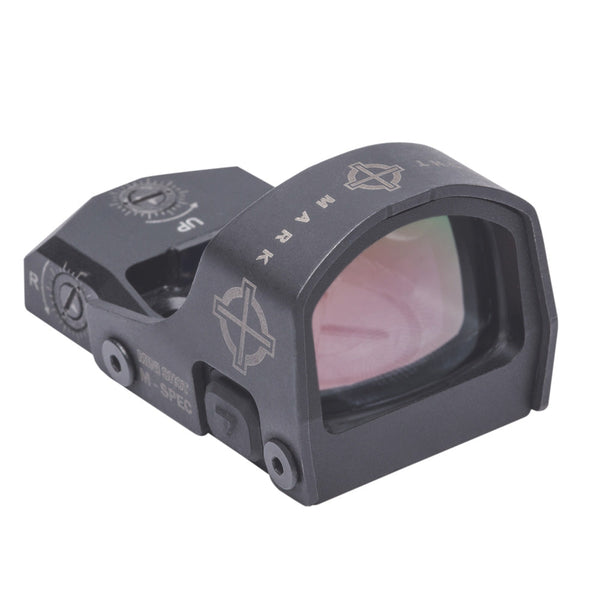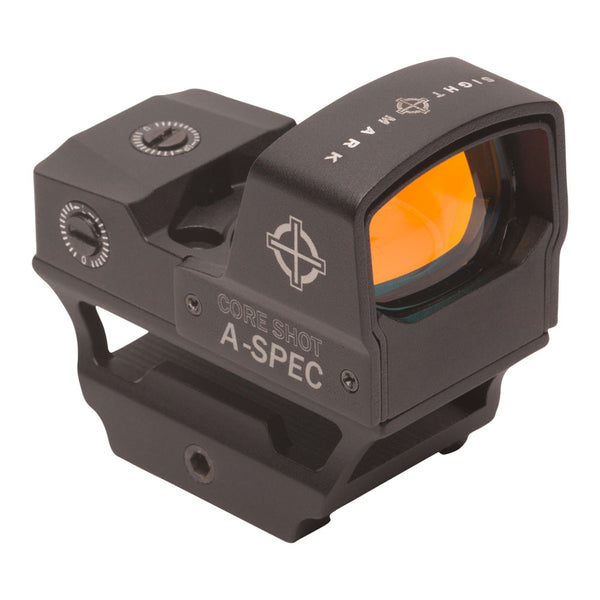You’ve got a red dot. You’ve got a pistol with an optics-ready slide. But when you try to mount your optic, the screws don’t line up. The recoil lugs are in the wrong place. Nothing fits, and now you’re frustrated, confused, and searching for answers.
We hear it all the time.
This is one of the most common complaints among red dot users: footprint confusion. It’s not always obvious which pistol slides are compatible with which red dots—and that’s before you get into mounting plates, adapter kits, or aftermarket milling. That’s why we put together this guide.
Whether you already own a red dot or you’re planning your first optics-ready pistol build, this article will walk you through:
- What a red dot footprint is (and why it matters)
- The four major footprint types used by factory-cut slides
- A comprehensive compatibility chart of firearms organized by footprint
- How to choose a Sightmark optic that matches
What Is a Red Dot Footprint?
A red dot’s footprint refers to the pattern of screw holes and recoil lugs on the base of the optic. That same pattern must match the corresponding cuts in your handgun’s slide or mounting plate. If it doesn’t match exactly, your optic either won’t mount—or worse, it might loosen over time under recoil.
Some pistol slides are direct-mount only. Others come with removable plates designed to adapt to common footprints. But the key detail is this: your slide must match your optic’s footprint—or support it through a factory plate.
The Four Major Red Dot Footprints
Over time, four primary footprint standards have emerged across the handgun optics industry. For clarity and neutrality, we refer to them here as M1 through M4:
M1 Footprint
- Widely used for full-size red dots
- Found on many full-size optics-ready pistols
- Larger screw spacing, durable design
M2 Footprint
- Common for mid-size and compact optics
- Often seen on competition pistols or crossover models
- Slightly smaller screw/lug layout than M1
M3 Footprint
- Slim profile footprint used on micro-compact red dots
- Standard on subcompact and concealed carry pistols
- Ideal for minimal bulk and slide width
M4 Footprint
- Designed for enclosed emitter optics
- Increasingly seen on military- and LE-oriented handguns
- Offers added protection and rigidity for rugged environments
These patterns are industry standards—but most red dots and pistols don’t advertise which footprint they use by name. That’s where this guide comes in.
Why Footprint Compatibility Matters
Most customer support issues related to red dot mounting come down to one simple reality: the optic and slide weren’t made for each other. When the footprint doesn’t match, your optic may not sit flush, the screws may not align, or the whole system may shift or fail under recoil. In the worst cases, you’re looking at return shipping, stripped threads, or damage to your slide or optic. To avoid that headache entirely, it’s critical to match your red dot’s footprint to your pistol’s slide from the start.
Factory Firearm Compatibility Chart
The chart below shows a comprehensive list of US-market, factory optics-ready pistols and the red dot footprints they support without any third-party adapters or milling. That means if your optic uses the M1 footprint, these are the guns you can mount it on directly—or with a factory-provided plate.
Click a footprint tab to view compatible firearms:
- M1 (Full-size footprint)
- M2 (Mid-size footprint)
- M3 (Micro red dot footprint)
- M4 (Enclosed emitter footprint)

Before You Buy: Quick Compatibility Checklist
- Is your pistol factory optics-ready? (Not all slides are.)
- What footprint does the slide or plate support?
- Is your red dot optic labeled with a footprint type—or can you confirm its mounting pattern?
- Does the pistol include factory adapter plates, or will you need to request one?
Buy Smarter. Mount Faster. Shoot Better.
If you're mounting a red dot on your pistol, compatibility matters just as much as quality. Mismatched footprints can turn a range day into a return label.
Use this guide to eliminate the guesswork—and pair your next red dot with a pistol that’s ready to go from the jump.
Frequently Asked Questions
What is a red dot footprint?
A footprint is the exact pattern of screw holes and recoil lugs on the base of your red dot that must match your slide or mounting plate. If it doesn’t match, the optic won’t mount securely.
How do I find which footprint my pistol slide uses?
Check your pistol’s owner’s manual or product page for its optics cut specification. If it ships with plates, the plate labels often indicate the supported footprint. When in doubt, contact the manufacturer with your model and serial number.
Do I need a plate if my slide is “optics-ready”?
Sometimes. Some slides are direct-mount for a specific footprint, while others require a factory plate to adapt to common footprints. Use the plate that matches your optic’s footprint.
What happens if I try to mount a non-matching footprint?
You may see misaligned screws, poor optic-to-slide contact, shifting under recoil, stripped threads, or mounting failure. Always match the footprint exactly or use the correct factory plate.
Are M1–M4 official industry names?
No. M1–M4 are neutral labels used in this guide to group common footprint families. Always verify your specific optic and slide for exact compatibility.
Can one pistol support multiple footprints?
Yes, if it ships with a plate system. Each plate adapts the slide to a different footprint. Without plates, most direct-mount slides support only one footprint.








1 comentario
This guide really helped me understand footprints better. When I was shopping around, I found https://gritrsports.com/ useful since they mark which pistols are optics-ready.